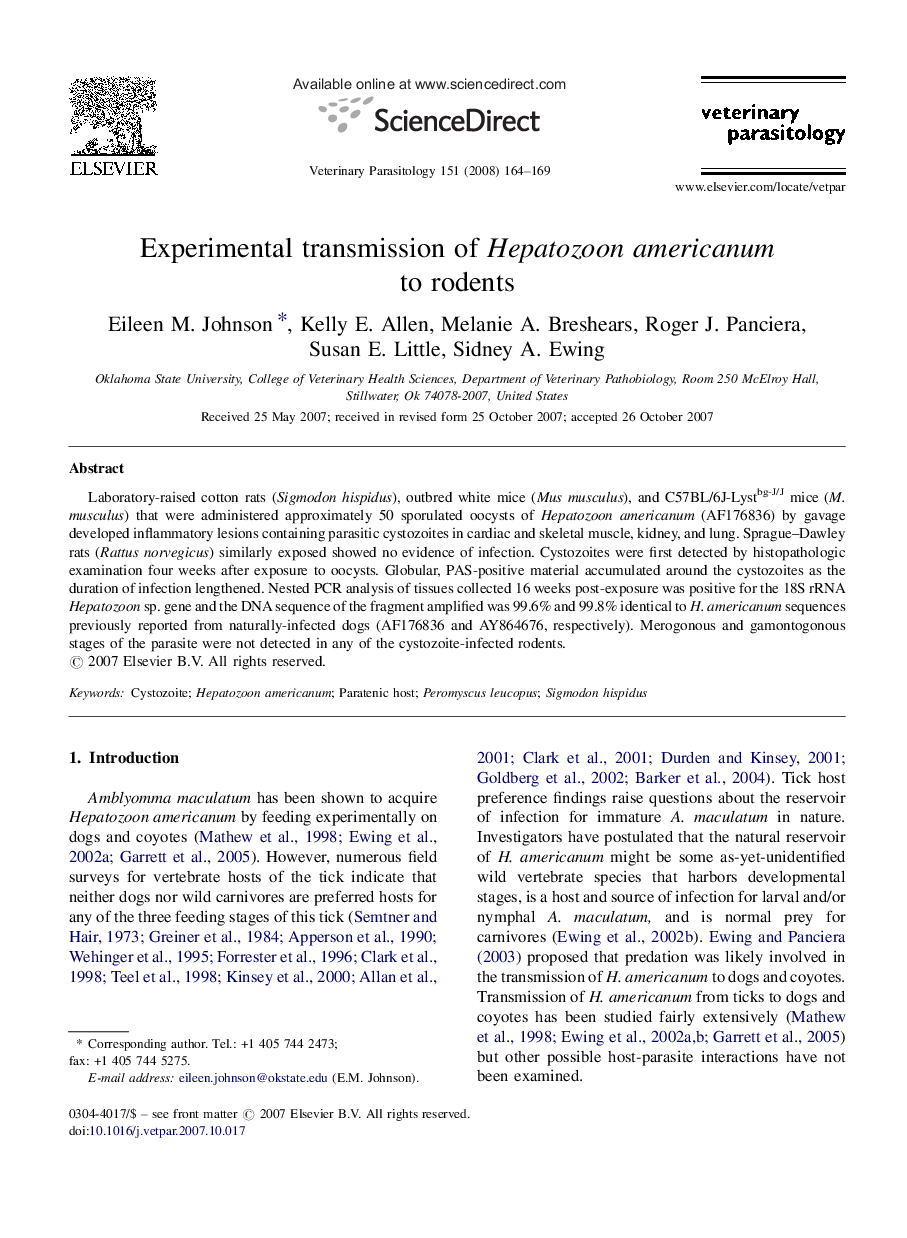| Article ID | Journal | Published Year | Pages | File Type |
|---|---|---|---|---|
| 2471642 | Veterinary Parasitology | 2008 | 6 Pages |
Laboratory-raised cotton rats (Sigmodon hispidus), outbred white mice (Mus musculus), and C57BL/6J-Lystbg-J/J mice (M. musculus) that were administered approximately 50 sporulated oocysts of Hepatozoon americanum (AF176836) by gavage developed inflammatory lesions containing parasitic cystozoites in cardiac and skeletal muscle, kidney, and lung. Sprague–Dawley rats (Rattus norvegicus) similarly exposed showed no evidence of infection. Cystozoites were first detected by histopathologic examination four weeks after exposure to oocysts. Globular, PAS-positive material accumulated around the cystozoites as the duration of infection lengthened. Nested PCR analysis of tissues collected 16 weeks post-exposure was positive for the 18S rRNA Hepatozoon sp. gene and the DNA sequence of the fragment amplified was 99.6% and 99.8% identical to H. americanum sequences previously reported from naturally-infected dogs (AF176836 and AY864676, respectively). Merogonous and gamontogonous stages of the parasite were not detected in any of the cystozoite-infected rodents.
